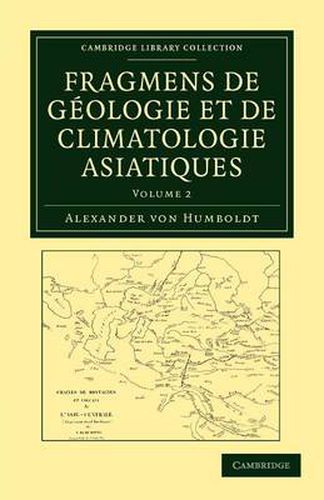Readings Newsletter
Become a Readings Member to make your shopping experience even easier.
Sign in or sign up for free!
You’re not far away from qualifying for FREE standard shipping within Australia
You’ve qualified for FREE standard shipping within Australia
The cart is loading…






Prussian explorer Alexander von Humboldt (1769-1859) was one of the most respected scientists of his day, influencing the work of Darwin. He is considered the founder of physical geography, climatology, ecology and oceanography. In 1829, the Russian government invited Humboldt to visit the gold and platinum mines in the Urals. As he studied the mountains’ mineral wealth, he was the first to predict the presence of diamonds. During six months, his epic 10,000-mile expedition took him as far as the Altai Mountains and the Chinese frontier. Humboldt’s observations on the geography, volcanic geology and meteorology of Central Asia, being then a largely unexplored territory, were acknowledged as pioneering contributions. The results of his journey also provided much of the data used in part of his great work Kosmos. The second volume of this book, published in 1831, deals with the hydrology and climatology of Central Asia.
$9.00 standard shipping within Australia
FREE standard shipping within Australia for orders over $100.00
Express & International shipping calculated at checkout
Prussian explorer Alexander von Humboldt (1769-1859) was one of the most respected scientists of his day, influencing the work of Darwin. He is considered the founder of physical geography, climatology, ecology and oceanography. In 1829, the Russian government invited Humboldt to visit the gold and platinum mines in the Urals. As he studied the mountains’ mineral wealth, he was the first to predict the presence of diamonds. During six months, his epic 10,000-mile expedition took him as far as the Altai Mountains and the Chinese frontier. Humboldt’s observations on the geography, volcanic geology and meteorology of Central Asia, being then a largely unexplored territory, were acknowledged as pioneering contributions. The results of his journey also provided much of the data used in part of his great work Kosmos. The second volume of this book, published in 1831, deals with the hydrology and climatology of Central Asia.